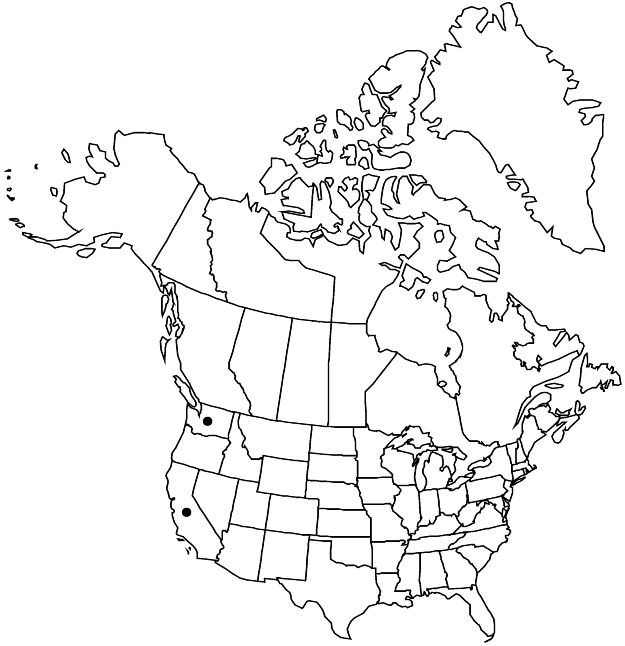Cotoneaster hodjingensis
Wiss. Z. Martin-Luther-Univ. Halle-Wittenberg, Math.-Naturwiss. Reihe 12: 774. 1963.
Shrubs, sprawling, 0.5(–1.5) m. Stems erect, becoming suberect, ascending, wide-spreading; branches spiraled, dense, maroon, stiff, minutely verruculose, initially densely pilose or villose-strigose, later sparsely so. Leaves persistent; petiole 1–2 mm, tomentose; blade narrowly elliptic, sometimes lance-elliptic, rarely lanceolate, 5–11 × 2–6 mm, coriaceous, base narrowly cuneate, margins slightly revolute, veins 2–4, slightly sunken, apex acute or obtuse with long mucro, abaxial surfaces grayish white-tomentose, adaxial dark green, shiny, not glaucous, minutely rugose and verruculose, flat between lateral veins, initially pilose-strigose, soon glabrate. Inflorescences on fertile shoots 10–20 mm with 4 leaves, 1(–3)-flowered. Pedicels 1–3 mm, tomentose. Flowers erect, 7–8 mm diam.; buds white; hypanthium funnelform, densely villous, becoming glabrate; sepals: margins villous, apex cuspidate or acuminate, surfaces tomentose; petals spreading, white, glabrous or hairy; stamens 20, filaments white, anthers purple; styles 2. Pomes bright red, sometimes tinged crimson or cherry, globose, subglobose, or depressed-globose, 6–7 × 5–8 mm, shiny, not glaucous, sparsely villous; sepals suberect or erect as coronet, villous to sparsely so; navel open with pyrenes exserted; style remnants at apex. Pyrenes 2. 2n = 68 (Germany).
Phenology: Flowering Jun; fruiting Oct–Nov.
Habitat: Banks, disturbed ground
Elevation: 0–50 m
Distribution

Introduced; Calif., Wash., Asia (China).
Discussion
Cotoneaster hodjingensis sometimes is synonymized with C. buxifolius Wallich ex Lindley (Zhou L. H. and Wu Z. Y. 2001; L. Lingdi and A. R. Brach 2003), a species from southern India with elliptic to ovate-elliptic, usually obtuse (rarely short-acute) leaves to 17 mm, petioles to 4 mm, 1–9 flowers per inflorescence (to 20 on end shoots), and a tomentose hypanthium. Here, C. hodjingensis is treated as separable by its normally narrower leaves no longer than 11 mm, usually acute, with petioles to 2 mm, solitary flowers (2 or 3 flowers per inflorescence on end shoots), and villous hypanthium becoming glabrate (G. Klotz 1963).
Selected References
None.